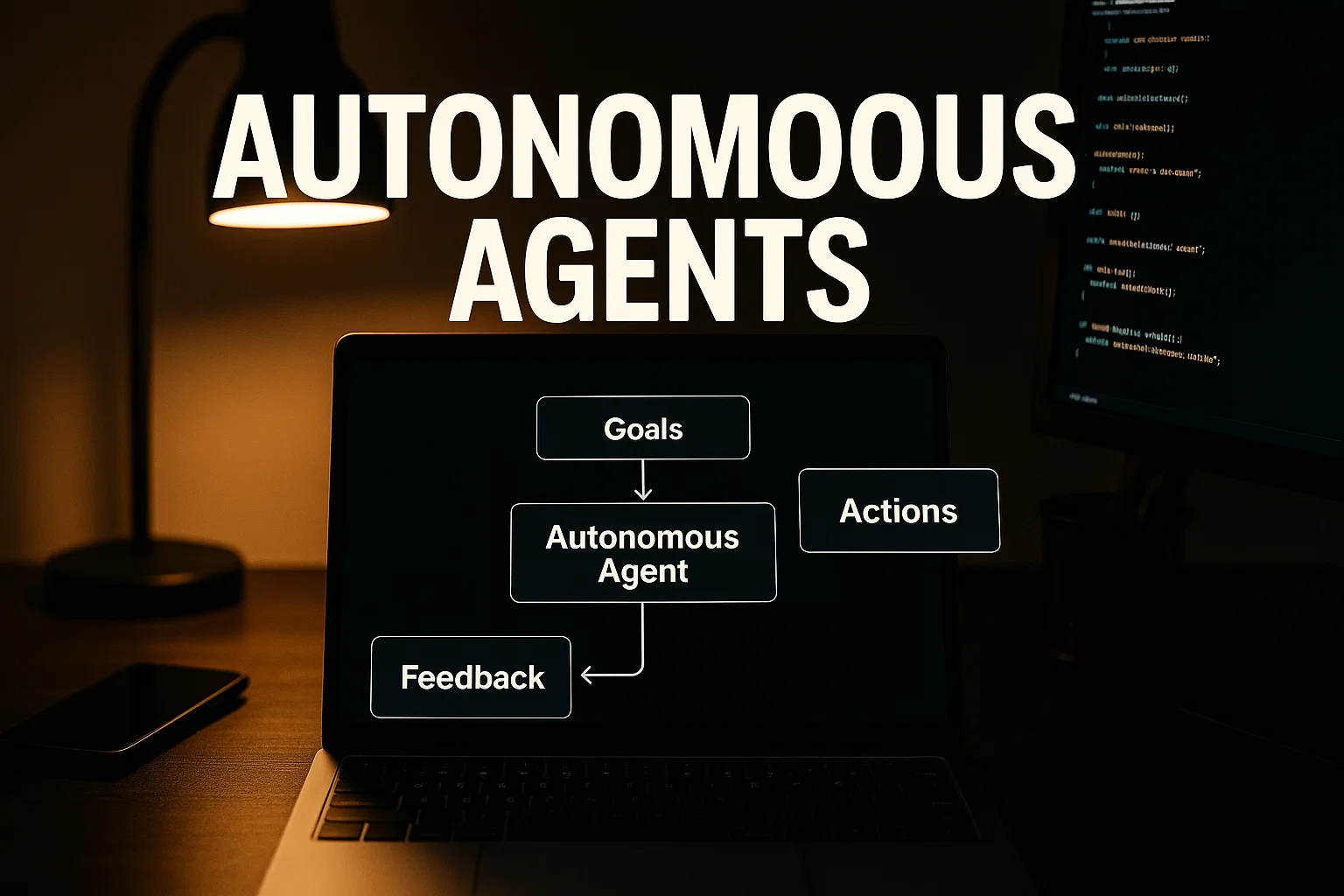Agentic AI describes systems that act autonomously toward goals, combining planning, execution, and feedback so you can automate workflows, scale decisions, and reduce manual work with safe guardrails.
Introduction
Agentic AI is the practical approach to building autonomous systems that set objectives, plan actions, and carry them out with minimal human intervention, this post is informational with hands-on guidance. You’ll get clear definitions, a step-by-step workflow, code you can copy, and on-page fixes to increase CTR and meta performance. I’ll mention related entities like autonomous agents and reinforcement learning early, because they matter when you design systems that must learn and adapt.
In my experience a small, repeatable loop — define, act, review — beats one-off experiments. This guide helps you deploy agentic systems that deliver results, while keeping safety, compliance, and SEO in mind.
What agentic AI is and why it matters
Agentic AI refers to artificial intelligence systems designed to take initiative, make decisions, and carry out multi-step tasks toward explicit goals. Unlike one-shot models that only respond to prompts, agentic systems manage state, plan sequences, and adapt when conditions change.
Key characteristics
- Goal-driven behavior: Agents receive objectives, then break those into steps.
- Planning and execution: They sequence actions, call tools, and handle results.
- Feedback loops: Agents adjust based on outcomes, logging successes and failures.
Background and context
Interest in agentic systems grew as organizations sought automation beyond single API calls. These systems combine language models, tool integration, and simple planners to handle tasks like data collection, triage, or repetitive decision making. They matter because they free you from manual work and can scale knowledge work efficiently.
Why this matters to you
If you build automation, integrations, or product features, agentic systems let you delegate entire tasks, not only individual prompts. That means you can automate follow-up emails, research, or multi-step publishing workflows, while maintaining oversight.
Benefits at a glance: scalable automation, faster throughput, consistent decisions, and improved operational efficiency.
How to build an agentic AI system — step-by-step
This section gives a practical workflow you can apply now, plus a simple code example.
Step 1 — Define scope and safety rules
Define the objective, allowed actions, and hard limits. Example: "Collect public product reviews, summarize sentiment, do not solicit personal data."
Step 2 — Design the planner and tools
Decide which APIs and tools the agent may call, how you handle retries, and how the agent logs actions.
Step 3 — Write a structured prompt and state schema
Use a clear prompt template that includes current state, goals, and allowed toolset.
Step 4 — Run iterations with human oversight
Start in sandbox mode, run small batches, and log outcomes for tuning.
Step 5 — Deploy with monitoring
Add alerting for failed tasks, and require human approval for sensitive actions.
Quick tips
- Keep state explicit, and version your prompt templates.
- Limit external actions until you have a reliable test harness.
Best practices, tools, and quick install tips
Follow these to improve reliability, safety, and SEO.
Best practices
- Use explicit intent and constraints in every prompt, this reduces unwanted actions.
- Human-in-the-loop approvals for sensitive or irreversible operations.
- Instrumentation and logs to track decisions and debug behavior.
Recommended tools
- LangChain or similar orchestration
- Pros: composable tools and chains, active community, templates.
- Cons: learning curve, dependency management.
- Install/start tip: install via package manager, import chains and test locally.
- Vector DB with retriever
- Pros: fast context retrieval, memory across runs.
- Cons: adds infra complexity, cost for storage.
- Install/start tip: spin up a local or hosted vector DB, index a small sample first.
- Task runner / workflow engine (for example, Prefect, or equivalent)
- Pros: observability, retry logic, scheduling.
- Cons: extra setup for orchestration.
- Install/start tip: use their quickstart template to wire a simple workflow.
Short pro/con notes
- Orchestration simplifies logic, but vendors vary in features.
- Retrievers are great for grounding, but require good data hygiene.
- Workflow engines help scale, but expect operational overhead.
Challenges, legal and ethical considerations, troubleshooting
Agentic systems offer power and risk. Design for safety from day one.
Common challenges
- Unexpected actions: Agents may call tools in unintended ways.
- Data leakage: If you feed private data without sanitization, the agent could expose it.
- Accountability: Tracing decisions to prompts and versions is essential.
Compliance checklist
- Define allowed action list, log all external calls, and store prompts and model versions for audit.
- Block personal data collection unless explicit consent and secure storage are in place.
- Implement rate limits and manual overrides to stop runaway behavior.
Troubleshooting steps
- Reproduce the failing run with the same prompt and state snapshot.
- Narrow down which tool call caused the issue, add input validation.
- Reduce model creativity settings if you need predictable plans.
Alternatives if agentic approach is too risky: human-in-the-loop automation, limited action bots, or scheduled batch processes.
Search quality advice recommends prioritizing user intent and safety when automating content or actions. (Google)
High quality content needs expertise and transparent process, pair model output with human review. (Moz)
Conclusion and CTA
Agentic AI gives you the ability to automate multi-step tasks, scale decisions, and free teams from repetitive work, while requiring careful design for safety and auditing. Start small, instrument every step, and iterate with human oversight. Focus on clear goals, robust logging, and constrained tool access to reduce risk.
Welcome to Alamcer, a tech-focused platform created to share practical knowledge, free resources, and bot templates. Our goal is to make technology simple, accessible, and useful for everyone. We provide free knowledge articles and guides in technology, offer ready-to-use bot templates for automation and productivity, and deliver insights to help developers, freelancers, and businesses. For custom development services for bots and websites, contact Alamcer.
Key takeaways:
- Use explicit goals and limits.
- Log prompts and model versions for traceability.
- Start in sandbox, deploy with monitoring.
- Pair agents with human review for critical tasks.
Further reading: Google guidelines (Google), Moz on content quality (Moz), SEMrush AI content guide (SEMrush), official platform docs (OpenAI, or your provider).
FAQs
What is agentic ai?
Agentic AI describes systems that autonomously plan and execute multi-step tasks to achieve explicit goals, combining model planning, tool calls, and feedback loops, with human oversight.
How is agentic AI different from normal AI tools?
Agentic systems manage state and perform sequences of actions, while normal AI tools usually answer single prompts, agentic systems can call APIs, plan steps, and loop on results.
Can I deploy an agentic AI for customer support?
Yes, with strict constraints, sandbox testing, and human fallbacks. Start by automating low-risk tasks, then add approvals for sensitive actions.
What safety measures should I add before production?
Add allowed action lists, input validation, logging, human approval gates, and stop switches. Keep model outputs auditable.
Which programming languages work best for agentic systems?
Python has rich tooling, JavaScript and Node.js are good for web integrations, choose based on your stack and tool compatibility.
How do I measure success for an agentic agent?
Track completion rate, error rate, time saved, and human intervention frequency, tie metrics to business outcomes rather than model metrics alone.
Can agents learn from their mistakes?
Yes, with feedback loops and retraining, but learning must be controlled, logged, and validated to avoid regressions.
Is agentic AI safe for regulated industries?
It can be, when you implement strict compliance controls, data handling standards, and professional legal review.
How much engineering effort is required to build a reliable agent?
Expect an initial effort to design tooling, prompts, and monitoring; smaller proofs of concept are quick, production-grade systems need robust infra.
Who should I contact to build a custom agentic AI solution?
Contact Alamcer for development, integration, and templates to accelerate your agentic AI projects.
Compliance and disclaimer
This guide provides general technical and operational information, not legal advice. Ensure you follow privacy laws, terms of service, and applicable regulations such as data protection rules. Consult a legal or compliance professional for jurisdictional guidance.



